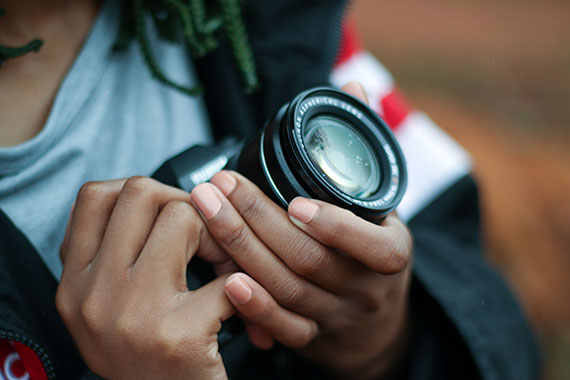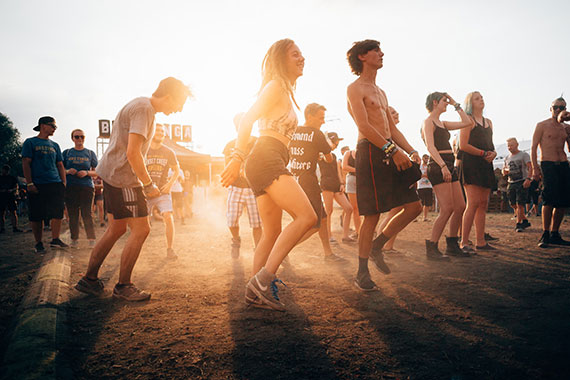If you’re the typical new digital photographer, you have to wonder if there’s a faster way to learn how to use your camera. The owner’s manual is written by a technical writer often not a practicing photographer.

Photo by The Digital Marketing Collaboration
Follow these steps, using your manual as a guide, and you should be taking pictures in no time.
- Take some pictures on automatic, program, aperture, or shutter priority mode.
- Download the images onto your computer.
- Format the card.
- Change the ISO.
- Change the shutter speed and aperture.
- Change the white balance.
- Change the compression or quality.
- Choose which autofocus sensor in your viewfinder to use.
Once you’ve mastered those 8, learn how to do these next:
1. Enable the histogram for image preview
You might be asking yourself what this does. The histogram is the most reliable way to determine if you have properly exposed your image. How that picture you just made appears on that tiny LCD monitor is not a good indicator. Under dark surroundings the image may look great and in bright sun, it will look underexposed. Learning to interpret a histogram is the best method and not at all difficult.
2. Change the metering mode
Essentially these settings allow you to tell your camera’s meter what you want it to favor when taking a light reading. Since light meters are “dumb” and tend to want to average out every scene, they can get fooled in tricky lighting situations.

Photo by Philipp
3. Set the output of the flash
Some DSLRs have built-in or pop-up flash units which remind me of a crab’s eye.
4. Set separate buttons to trigger auto-focus and shutter release
Canon and Nikon and possibly other camera makers understand the necessity of splitting the function of actual shutter actuation and autofocus. Other camera manufacturers may have this capability as well, but I can’t speak to that since my experience is limited to those two brand names.
Why is this useful, you might ask? When you just want to follow focus or track your moving subject like in sports photography, use your thumb to hold down a button on the back of the camera and activate the autofocus. When your subject stops moving, all you have to do is remove your thumb from that button momentarily, then press the shutter release button with your index finger.
5. Disable shutter actuation if there is no memory card
This is fancy speak for setting your camera so that you can’t take a picture when you don’t have a card. This is a throwback to the days of film. Many a photographer has been burned thinking they had film in their camera, so just make sure you can’t trip the shutter if there is no memory card. You may not have to change this, if this is already the default setting.
6. Reset to factory default
When things go awry, learn what happens if you have to revert to the factory default. Your owners manual will tell you what the default settings are. The layers upon layers of options under the myriad menus in today’s DSLRs makes card-counting by professional blackjack players seem like child’s play. So sometimes starting over may be your only option. As you customize your camera, write notes in your owner’s manual on what you’ve enabled or disabled.

Photo by Stephy Miehle
7. Disable the beep when autofocus is achieved
This is probably more my pet peeve than anything. As the photographer you can see or confirm your subject is in focus; you don’t need to hear an audible signal. It’s distracting, amateurish, and it drains the batteries.
8. Disable autofocus
This may not be so obvious but there are times when you want to pre-focus at a particular spot. And switching to manual focus is the best way to make sure the camera’s autofocus sensor doesn’t get fooled. This switch is usually on the lens.
9. Set the drive mode
The drive mode controls how quickly the camera fires after it attains focus. This is different from the old film days because it’s dependent on how quickly the camera can write to the memory card, which is in turn dependent on the brand or quality of the memory card you use.
Other less used functions which apply to flash photography might include high speed sync, automatic flash bracketing, and rear curtain sync. But those features are only available if you happen to cough up the big bucks and buy a brand name flash unit from Canon and Nikon.
About the Author
A Riverside-based freelance photographer, Peter Phun also teaches photography at Riverside City College. He does portraits, weddings, and editorial work. He writes about photography, Macs, and the internet. He also designs websites and is a stay-at-home dad.
Like This Article?
Don't Miss The Next One!
Join over 100,000 photographers of all experience levels who receive our free photography tips and articles to stay current:






This is so bogus…. If you are of limited experience with a camera, lenses, and lighting you shouldn’t be within 100 miles of someone’s wedding as “the” photographer. I have seen more crap produced by more amateur “professionals” than I can stand. Just because you can produce that wonderful sunset/waterfall photo on your hiking vacation doesn’t mean you can deal with a complicated photo shoot like an ad campaign or a wedding. Don’t ruin peoples’ day… leave your canon rebel or your nikon D3 or your 1DX home if you haven’t worked for 1000’s of hours to actually learn how to do these sorts of things.
I am not sure about this article. Even beginners are often advised to shoot RAW, so why fiddle with the white balance? Only a newbie would need to read this article, and I wonder why a beginner would need to begin by using manual focus? How about all the other things that matter? Composition, exposure, getting out of the green automatic function settings? Similarly, a beginner would probably benefit from the beep from the autofocus.
Have to disagree with you on the autofocus beep.. Some of the cheaper telezoom lenzes (yes I’m speaking from a budget/starter point of view, since I’m in that position myself) have a hard time focusing. By the time you realize that your lens has finished focussing, the subject could already be long gone. I think that with the beep on, you can press the shutter faster that without…